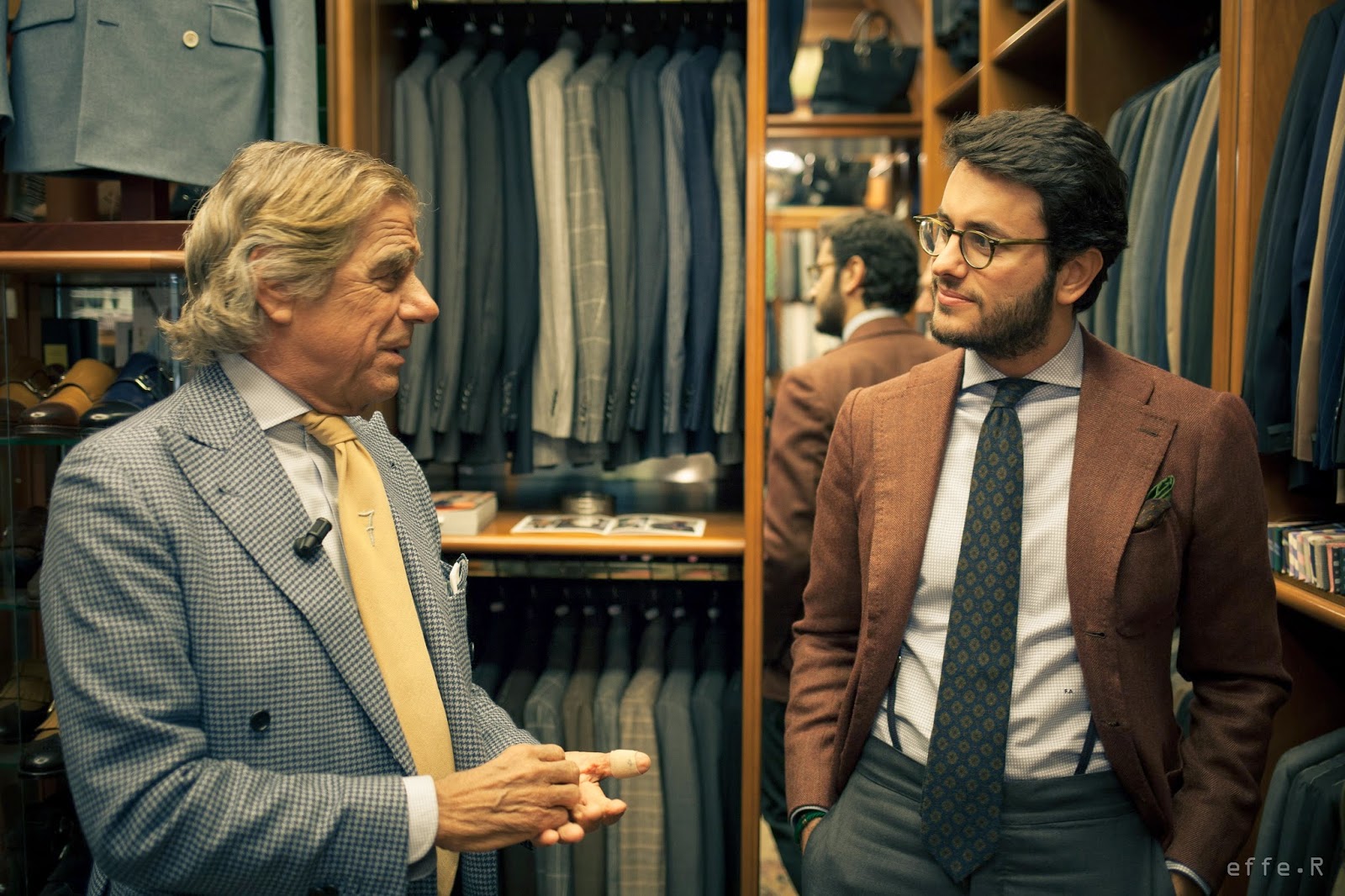Lorenzo Albrighi, 26 years old, tailor. I discover him thanks to an article on Style magazine. I ask an interview: it is nice to know that there are still young people approaching this craft.
Lorenzo albrighi, 26 anni, sarto. Lo scopro grazie ad un articolo sulla rivista Style. Mi metto in contatto per un’intervista: è bello sapere che ci sono ancora giovani che si avvicinano a questo lavoro.
First floor of a building in Corso San Gottardo, among large retailers’ shop windows and kebab sellers with flashy signs. A crumbling apartment resembling a vintage movie scene, shared with an older and renowned Milanese tailor. Unusual scene for Milano, city of showrooms and glossy ateliers.
Primo piano di un palazzo in corso san gottardo, tra vetrine di marchi della grande distribuzione e kebabari dalle insegne sgargianti. Un appartamento fatiscente che nulla avrebbe da invidare all’affascinante set di un film d’epoca; in condivisione con un sarto storico milanese, questo con molte più primavere alle spalle. Una realtà insolita per Milano, città di showroom ed atelier patinati.
In this unassuming room with view on Piazza XXIV Maggio, Lorenzo avails himself of the help of four guys, all under 30. They all study completely different subjects, from political sciences to agriculture, there’s even a psychologist. They are the new graduated-artisans of nowadays, who keep all their wits about them and react to the job vacancy understanding a trend: thanks to the economic downturn people spend less, but spend better. The luxury market doesn’t have any recession, so they’re learning part-time to sew, some self-taught, others at SIAM (Arts and Crafts Support School).
Oltre a Lorenzo, in una stanza senza pretese con vista su piazza XXIV maggio, quattro ragazzi, tre under 30. Studiano tutt’altro, dalle scienze politiche ad agraria, c’è anche uno psicologo. Sono i nuovi artigiani-laureati di oggi, con l’occhio lungo e attento, hanno subodorato il fallimento delle professioni classiche e reagiscono all’assenza di lavoro carpendo un trend: grazie alla crisi si spende meno, ma si spende meglio. Il mercato del lusso poi, si sa, non conosce periodi bui e loro, part-time, stanno imparando a cucire, chi da autodidatta chi alla SIAM (Scuola di Incoraggiamento Arti e Mestieri).
The jacket, unfortunately, belongs to the standards of Milan’s ars sutoria, dull and old-fashioned, perhaps addressed to an old public or to youngsters with a debatable retrò taste. A lot of camel hair, a lot of horse hair and low collars; you can feel the link with Caraceni’s style, allegedly Lorenzo’s teachers. I feel relief when I see that at least the jackets feature no shoulder padding. The tailoring craft needs a long apprenticeship and not everyone understands it. It would be enticing the existence of young tailors sewing suits at affordable prices, maybe their sales would have a boost. Starting prices here are comparable to those of many renowned tailor’s shops in Milan and even three times higher than those of some young Neapolitan tailors. This gap is not reasonable considered the difference between the cost of life in Naples and Milan.
La giacca rientra appieno, purtroppo, nei canoni dell’ars sutoria milanese, pesante e vecchio stile, evidentemente indirizzata ad un pubblico anziano o a giovani con un opinabile gusto retrò. Tanto crine di cavallo, tanto pelo cammello e colli bassi; si sente l’impronta di Caraceni, per il quale Lorenzo è stato a quanto pare apprendista. Tiro un sospiro di sollievo quando vedo che almeno non usano spalline nelle giacche. Il mestiere del sarto richiede un lungo apprendistato e non tutti hanno l’umiltà di capirlo. Sarebbe bello vedere dei giovani sarti fare abiti a prezzi abbordabili per i loro coetanei, forse le loro vendite salirebbero enormemente. I prezzi di partenza qui sono paragonabili a quelli di molte storiche sartorie milanesi e anche tre volte superiori a quelli di tanti giovani sarti napoletani. E non raccontiamoci frottole giustificando questi prezzi con un costo della vita più elevato a Milano rispetto a Napoli...
If you like what we are doing here, please consider following TBD on
Bespoke Hugs,
Fabio

















































































.jpg)




















